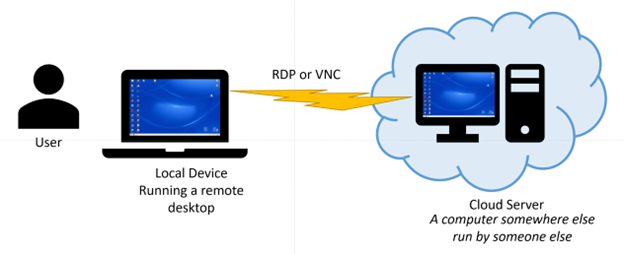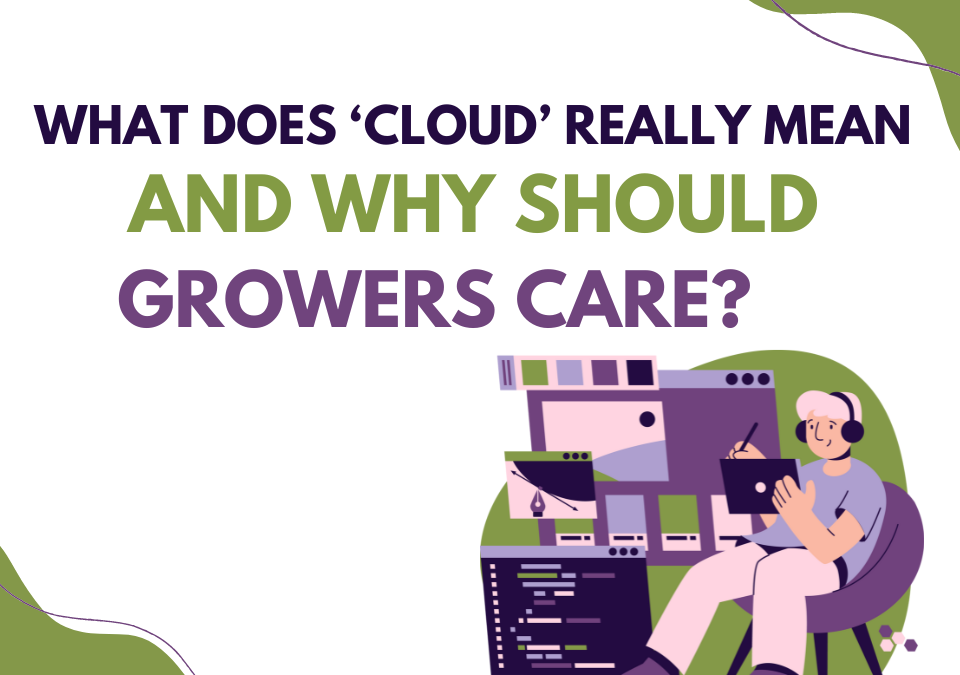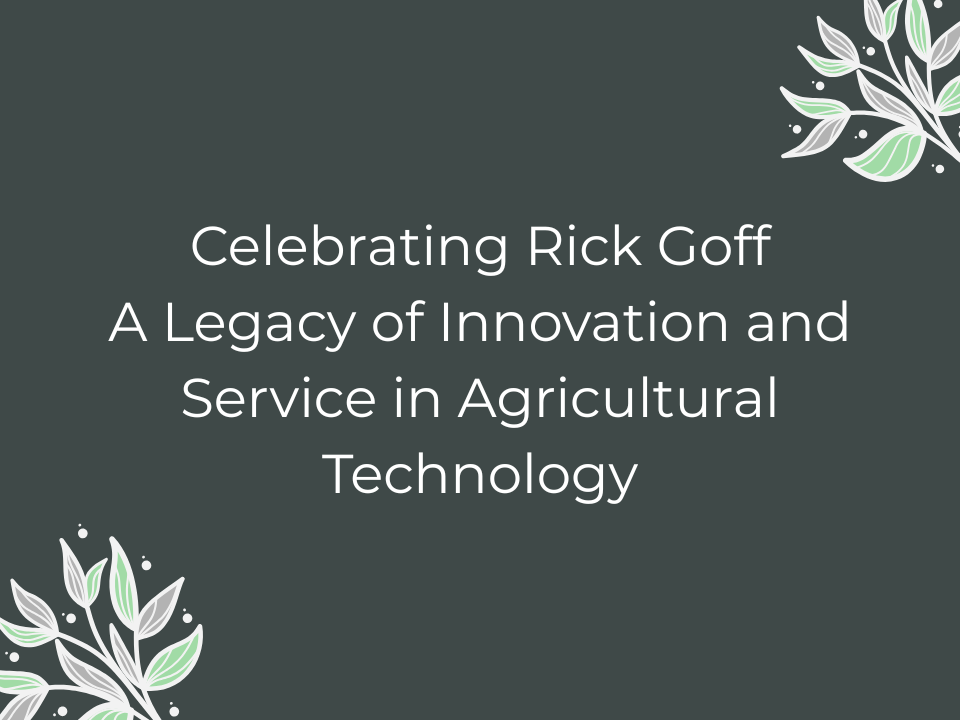
How Your Grower Data Is Like A British Murder Mystery And What To Do About It
March 15, 2023
Key Questions Of Grower Inventory Management
April 7, 2023Cloud is a term that can be mis-used. Lack of understanding what cloud server means can impact your decision making when it comes to purchasing software and systems that bill themselves as ‘cloud’ systems.
Unscrupulous marketers can use the opaqueness of words like ‘cloud’ to mask aspects of an offering to unknowledgeable consumers.
In this post I will try to clear up some of the basic meaning, and concepts around cloud servers.
What Does The Term Cloud Server Mean?
In the context of software and systems, at the most basic level it means ‘a server located somewhere else run by someone else’. Yes, that’s what cloud means at its most basic level.
Two General Classes of Cloud Server
In general, there are two most basic classes of a cloud server.
The first one is a server running all or a portion of web or database application you typically access through a browser or mobile app. In fact, some many browser or mobile based apps communicate to many different cloud application or API servers depending on the architecture of the web or mobile application. Usually, these types of cloud servers are said to be providing some sort of service which could be as simple as responding to web site page requests (like the one you are reading now) with the HTML (web page) content for a page or they could provide an API service where they respond to specific data requests with actual data such as getting the specific quantity of a plant you have in inventory.

Example Cloud Server acting as a web site server
Copyright Advanced Grower Solutions
The second general type is a cloud server you actually login to as a dedicated remote desktop user using a remote desktop access program like VNC or RDP. In this case the access method will present you with a virtual desktop and your local mouse and keyboard will be used to control the remote server login instance. Additionally, these remote desktop servers can also provide methods to save files locally and access local printers if so configured. These types of server present a more typical desktop or laptop experience, just using a server that is not on your desktop or laptop but located somewhere else.

Example Cloud Server acting as a remote desktop
Copyright Advanced Grower Solutions
What About IoT?
For growers who utilize more environmental sensors such as CEA type applications, or dedicated in-field data monitoring stations you can argue that IoT (Internet of Things) devices are indeed servers providing some sort of data monitoring and feedback service. True, however, the IoT devices are usually communicating to other servers or application databases for data aggregation and monitoring purposes and not directly accessed by end users. Many times, those IoT devices are also usually on the local grower’s network and thus would not be considered cloud in the general definitions above. However, in some cases those IoT devices would be part of a larger public cellular network, thus being remote, and would technically meet the definition. For our purposes here we will focus the user application type servers.
In The Real-World Business Use Both Types
For a large portion of the business world there are plethora of use cases for both general cloud server types. Certainly, the greater extent of new web and mobile applications will utilize cloud servers in the first category, that is remote services responding to data requests (API or Database) or web page requests or some hybrid. However, there are many valid use cases and many very important applications that will use the remote desktop cloud server and work just fine.
What Else About A Cloud Server Is Important Or Better?
Beyond that basic level of a computer located somewhere else there are additional aspects of cloud servers that would need to be considered and services that can be added around them to ensure accessibility and availability.
Electrical Power
Servers need electricity to run. In commercial cloud data centers the buildings are engineered to have multiple electrical power feeds, sometimes from different electrical providers to help ensure the highest reliability in the availability of power. Further, in the eventuality that input building power is lost, these providers have high capacity battery backup systems and generation capability to provide power during an outage.
Many growers who put servers in the back office or closet don’t have access to these types of reliability mechanisms which help the longevity of the physical hardware and the veracity of the data stored in the server.
Internet Connectivity
Public cloud providers also go to great lengths to have multiple, redundant high bandwidth internet connections, usually from multiple providers. This allows them to be ‘always’ connected.
Many growers who operate in the more rural areas don’t have access to multiple choices for internet thus impacting decision making for where to locate servers or services.
Controlled Environment
Just like plants in a greenhouse, computers require an appropriate environment to operate reliably. This includes the correct temperature and air moisture ranges as well as limits on vibration and radiation. The electronic components of typical servers will fail if the temperature gets too high or the environment is too damp. Additionally, a clean environment help lengthen server life as dust and dirt can lessen the effects of cooling mechanisms.
Growers who choose to host their own servers in their office need to be aware of the limits on their particular hardware in terms of these physical limits.
Physical And Virtual Security
Public cloud server providers also facilitate secure access to the premises, where only authorized users can access physical hardware which typically lives behind multiple layers of physical barriers (locked doors and secure cabinets for example).
Further, many provide for various types of ‘firewalls’ that help filter and block malicious users or traffic so as to further provide protection for you data and applications.
Growers who choose to use their own equipment must provide these services and protections on their own.
Backup
Every server will fail at some point. A backup is a physical copy of the data from that server that is placed somewhere else and can be used in the event of a failure to restore service. Public cloud server providers offer dedicated backup as well as the ability to use other third-party services to back up your data.
For growers that host their own servers make sure that you have an adequate backup of your data that is regularly refreshed, reliable, and stored securely off site. Read our blog Have You Backed Up Your Data to learn great tips for backing up your data.
Software Updates
Cloud servers run operating systems just like your laptop or desktop computers. So whether Windows Server or a Linux variant the software that powers the server must be updated from time to time to correct defects, deploy improvements and add security enhancements. In public cloud providers these updates can be managed for you in many cases depending on the type of service you use.
Self-hosted growers must ensure that proper updates are installed and managed to handle issues and security problems.
Physical Hardware Redundancy
Some applications require very high reliability and thus physical redundancy is required. Physical redundancy allows a ‘failover’ from a failed server to another that is able to provide an identical server or data feed. Physical redundancy requires more servers and ancillary hardware as well as specialized monitoring and control protocols to detect and manage the failover and still have the services accessible to users.
Most growers don’t need this level of redundancy for the basic operational software. But, if a particular application requires it is less expensive to have this redundancy in a cloud network as opposed to buying and managing all the hardware individually.
Parting the Clouds
As you can see there is a lot to an effective and reliable cloud server.
Growers need to be aware of what their needs and limitations are as well as the aspects of products they would purchase when considering cloud servers versus using on premise servers.
At Advanced Grower Solutions we use and sell both general types of cloud servers. We can help you sort through the fog and see more clearly how to move forward in your decision-making process.
Contact Us for a discussion about your needs and learn about GrowPoint Cloud which can; save you money, allow you and your employees the freedom to work anywhere with internet, cut down your environmental impact, and reduce security risks.





